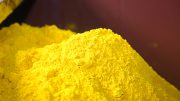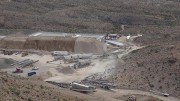Slow adjustments to potash supply will “prolong the pain of rebalancing,” while power “shifts to the buyers,” Macquarie Research says.
“We expect a record large surplus of 6 million tonnes to accumulate at the end of 2016, and therefore remain bearish on potash — our core ‘underperform’ call,” the bank says in a January research note on commodities.
In a new research note, the bank cut its 12-month target price on Potash Corp. of Saskatchewan (TSX: POT; NYSE: POT) to US$14 per share from US$17 per share, and from C$23 per share down to C$20 per share.
The bank forecasts lower potash demand this year and says its outlook diverges from PotashCorp’s, which forecasts global potash shipments from all producers in 2016 will be between 59 million tonnes and 62 million tonnes.
By contrast, Macquarie’s commodity team forecasts global demand of 55 million tonnes, “as weak farmer economics, struggling purchasing country currencies and uncertainty over the China contract remain headwinds.”
In terms of the outlook for the 2016 contract, Macquarie says China finished 2015 with a potash inventory of more than 7.5 million tonnes, which it calculates represents a stock-to-use ratio of more than 55%.
“Inventory-on-hand plus domestic production capacity puts China in a strong negotiating position this year,” Macquarie’s analysts write. “We are officially calling for a US$270- to US$280-per-tonne 2016 contract price [if the contract system survives], but we note that the Southeast Asian spot potash price continues to fall … in the past, when the Southeast Asian spot price has fallen below the previous China contract price, the next contract tends to settle materially lower.”
The bank forecasts that prices “should head to the cost of production,” and that based on the “market dynamic,” sees “no reason for the potash price to trade above the cost curve over the medium-term.”
Recent news from PotashCorp underscores how challenging the potash industry has become for producers. On Jan. 19, the company announced it is suspending its Picadilly potash operations in New Brunswick, which will put more than 400 employees out of work. The operation is now on care and maintenance, with a 35-person staff. The company expects care and maintenance costs of US$20 million in 2016 and US$15 million in subsequent years.
Management said the closure would help the company “optimize production to its lower-cost potash operations, realize meaningful capital savings, maintain long-term operational flexibility and preserve jobs across the company over the long-term.”
The decision, management added, would increase the company’s competitiveness and lower the cost of goods sold by US$40 million to US$50 million in 2016, although some of this would be offset by severance and transition costs. (It anticipates US$35 million in severance and transition costs in the first quarter of 2016.) Suspending operations at Picadilly will also remove US$50 million in capital expenses this year, and US$135 million in 2017–18.
The company has cut its quarterly dividend 34% to 25¢ per share, noting that the new level represents an almost 100% payout ratio of 2016 earnings.
Year-end results for its potash division (the company also makes nitrogen and phosphate) underscored “a softening price environment,” and reduced sale volumes.
Gross margins for the year came to US$1.3 billion, down from US$1.4 billion in 2014, with sale volumes down 6% year-on-year. Sale volumes in the fourth quarter were down 31%, with average realized potash prices in the quarter at US$238 per tonne, down from US$284 per tonne in the fourth quarter of 2014.
The company expects potash sale volumes in 2016 to range from 8.3 million to 9.1 million tonnes, and forecasts a potash gross margin of US$0.8 billion to US$1.1 billion, “down significantly from 2015, as the sharp decline in potash prices through the second half of that year is expected to weigh on margins in 2016.”
The company’s 2015 earnings reached US$1.52 per share (US$1.3 billion), down from 2014’s US$1.82 per share (US$1.5 billion).
It forecasts 2016 earnings will come in at US90¢ to US$1.20 per share.





Be the first to comment on "Potash faces ‘significant headwinds,’ Macquarie says"